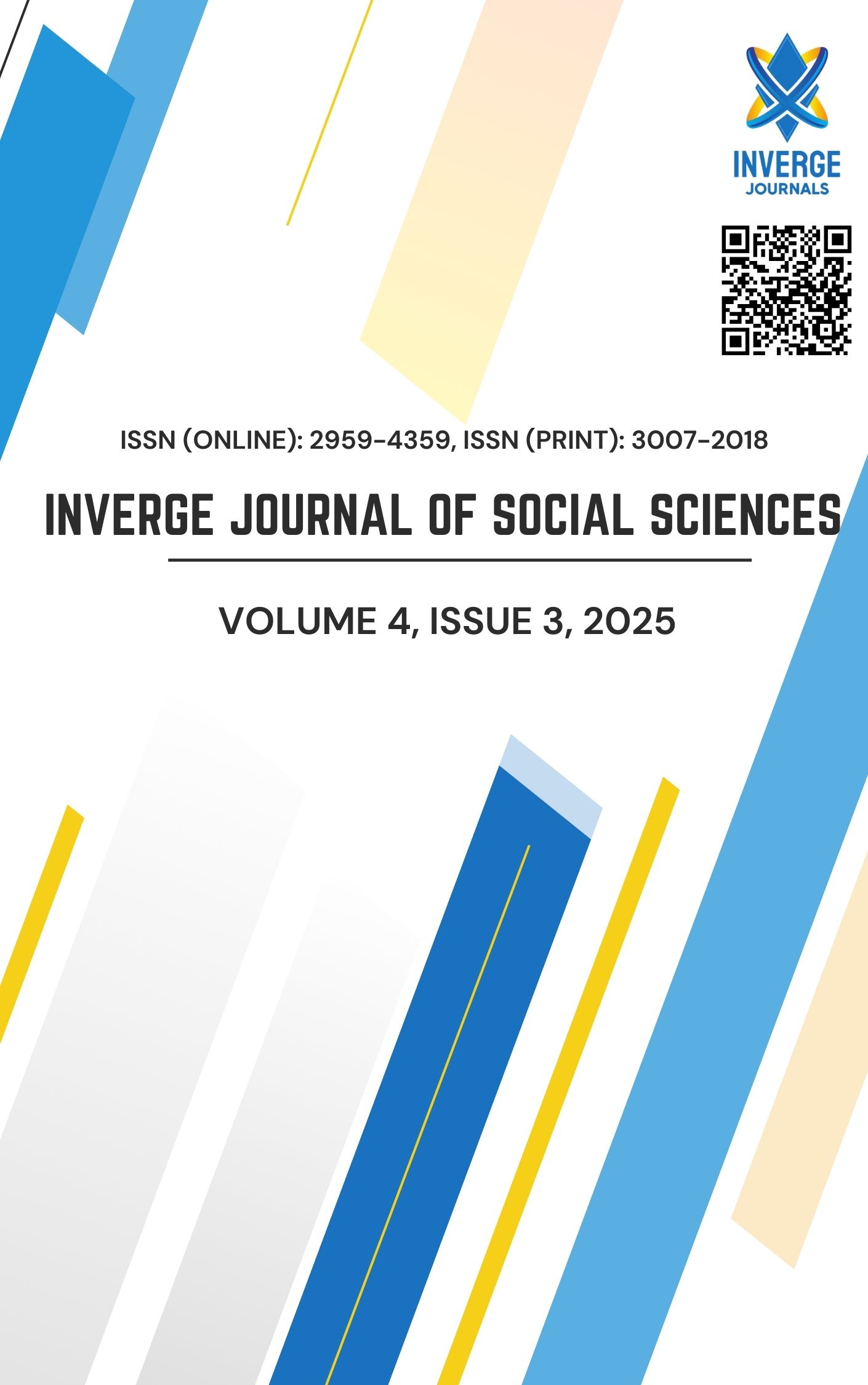Trends and Economic Consequences of Paramphistomosis: A Statistical Analysis from a Two-Year Abattoir Study
DOI:
https://doi.org/10.63544/ijss.v4i3.174Keywords:
Economic losses, Paramphistomosis, Cattle, Buffalo, Prevalence, Statistical analysis, Seasonal trend, Abattoir survey, PakistanAbstract
Paramphistomosis is an emerging pathogenic disease of ruminants, inflicting severe economic losses on the livestock sector through reduced milk and meat production, weight loss, treatment costs, and high mortality, particularly in young animals. This study aimed to quantify the prevalence and economic impact of paramphistomosis in cattle and buffaloes slaughtered in the Lahore district. A comprehensive two-year abattoir survey (January 2023 – December 2024) was conducted, recording monthly condemnation data. Statistical analysis revealed a highly significant disparity (Mann-Whitney U test, p < 0.001) in infection rates between species, with buffaloes exhibiting a markedly higher overall prevalence (22.99%) compared to cattle (8.41%). A powerful seasonal pattern was identified (Kruskal-Wallis H Test, p < 0.001), with infection rates peaking dramatically during the monsoon season (July-October), exceeding 41% in buffaloes. This fluctuation was strongly correlated with environmental conditions. Crucially, no significant temporal trend was found (p > 0.8), indicating stable, endemic disease levels. Direct economic losses from organ condemnation alone amounted to several thousand crore Pakistani rupees annually. When combined with indirect losses from an estimated 20-30% reduction in milk yield, weight loss, mortality, and treatment costs, the total economic burden is profound. The findings underscore the endemic nature of paramphistomosis and highlight the ineffectiveness of current control measures. The study concludes with urgent recommendations for implementing strategic deworming programs aligned with seasonal epidemiology, promoting integrated parasite management, and enhancing farmer education and veterinary infrastructure to mitigate these substantial losses and secure Pakistan's agricultural economy.
References
Alvi, M. A., Alshammari, A., Asghar, F., Ali, R. M. A., Li, L., Saqib, M., ... & Jia, W. Z. (2022). Prevalence, risk factors and first record of mitochondrial cox 1 gene-based molecular characterization of Paramphistomum epiclitum from Pakistan. Frontiers in Veterinary Science, 9, 1018854. https://doi.org/10.3389/fvets.2022.1018854
Asif, M., Khan, A., & Pasha, M. A. (2019). Psychological capital of employees’ engagement: moderating impact of conflict management in the financial sector of Pakistan. Global Social Sciences Review, IV, 160-172. http://dx.doi.org/10.31703/gssr.2019(IV-III).15
Atcheson, E., Skuce, P. J., Oliver, N. A., McNeilly, T. N., & Robinson, M. W. (2020). Calicophoron daubneyi—The path toward understanding its pathogenicity and host interactions. Frontiers in Veterinary Science, 7, 606. https://doi.org/10.3389/fvets.2020.00606
Clancy, S. M., Whitehead, M., Oliver, N. A., Huson, K. M., Kyle, J., Demartini, D., ... & Robinson, M. W. (2025). The Calicophoron daubneyi genome provides new insight into mechanisms of feeding, eggshell synthesis and parasite-microbe interactions. BMC biology, 23(1), 11. https://doi.org/10.1186/s12915-025-02114-0
Coomansingh-Springer, C. M., de Queiroz, C., Kaplan, R., Macpherson, C. N., Carter, K., Fields, P., ... & Pinckney, R. (2025). Prevalence of gastrointestinal parasites in small ruminants in Grenada, West Indies. Veterinary Parasitology: Regional Studies and Reports, 59, 101218. https://doi.org/10.1016/j.vprsr.2025.101218
Dolsophon, K., Nak-On, S., & Chontananarth, T. (2024). Tegumental surface change in Paramphistomum epiclitum caused by Bombax ceiba flowers and black pepper seed extract. Experimental Parasitology, 260, 108724. https://doi.org/10.1016/j.exppara.2024.108724
Foreyt, W. J. (2013). Veterinary parasitology reference manual. John Wiley & Sons.
Government of Pakistan. (2023). Pakistan economic survey 2022-23. Finance Division, Economic Adviser's Wing.
Gonzalez-Warleta, M., Lladosa, S., Castro-Hermida, J. A., Martínez-Ibeas, A. M., Conesa, D., Muñoz, F., López-Quílez, A., Manga-González, Y., & Mezo, M. (2013). Bovine paramphistomosis in Galicia (Spain): Prevalence, intensity, aetiology and geospatial distribution of the infection. Veterinary Parasitology, 191(3-4), 252–263. https://doi.org/10.1016/j.vetpar.2012.09.006
Hossain, D., Banowary, B., Saud, B., Haq, I., Bristi, S. Z. T., Adesola, R. O., & Amin, M. N. (2025). Prevalence of gastrointestinal parasites and associated risk factors among dairy cattle in Bangladesh: An 8-year retrospective study. Acta Parasitologica, 70(3), Article 110. https://doi.org/10.1007/s11686-025-01043-w
Javed Khan, U., Tanveer, A., Maqbool, A., & Masood, S. (2008). Epidemiological studies of paramphistomosis in cattle. Veterinarski arhiv, 78(3), 243-251. https://hrcak.srce.hr/24198
Khan, U. J., & Maqbool, A. (2012). Prevalence of paramphistomosis in relation to meteorological factors. Pakistan Journal of Zoology, 44(3), 823-828.
Mage, C., Bourgne, H., Toullieu, J. M., Rondelaud, D., & Dreyfuss, G. (2002). Fasciola hepatica and Paramphistomum daubneyi: Changes in prevalences of natural infections in cattle and in Lymnaea truncatula from central France over the past 12 years. Veterinary Research, 33(5), 439–447. https://doi.org/10.1051/vetres:2002031
Mas-Coma, S., Bargues, M. D., & Valero, M. A. (2005). Fascioliasis and other plant-borne trematode zoonoses. International Journal for Parasitology, 35(11-12), 1255–1278. https://doi.org/10.1016/j.ijpara.2005.07.010
McNeilly, T. N., Britton, C., Laing, R., Gilleard, J. S., & Sargison, N. D. (2025). The Calicophoron daubneyi genome provides new insight into mechanisms of feeding, eggshell synthesis and parasite-microbe interactions. BMC Biology, 23(1), Article 11. https://doi.org/10.1186/s12915-025-02114-0
Merck Animal Health. (2024, May 21). The global economic impact of parasites in cattle [Press release]. https://www.merck-animal-health.com/blog/2024/05/21/merck-animal-health-the-global-economic-impact-of-parasites-in-cattle/
Perry, B. D., & Grace, D. (2009). The impacts of livestock diseases and their control on growth and development processes that are pro-poor. Philosophical Transactions of the Royal Society B: Biological Sciences, 364(1530), 2643–2655. https://doi.org/10.1098/rstb.2009.0097
Pradella, B., Molosse, K. F., Menin, M., Matzembacker, B., Biondo, N., Vanazzi, D. L., ... & Camillo, G. (2020). Occurrence of gastrointestinal parasitic diseases of swine in different production phases in commercial pig farms from the State of Santa Catarina, southern Brazil. Arquivo Brasileiro de Medicina Veterinária e Zootecnia, 72(05), 1683-1690. https://doi.org/10.1590/1678-4162-11848
Rahman, M. M., Hossain, M. B., Islam, M. S., & Alam, M. G. S. (2025). A holistic review of buffalo productivity, reproductive efficiency, genetic improvement, and health management in Bangladesh. Veterinary and Animal Science, 29, Article 100496. https://doi.org/10.1016/j.vas.2025.100496
Rizwan, H. M., Zohaib, H. M., Sajid, M. S., Abbas, H., Younus, M., Farid, M. U., ... & Bajwa, M. H. (2023). Inflicting significant losses in slaughtered animals: exposing the hidden effects of parasitic infections. Pathogens, 12(11), 1291. https://doi.org/10.3390/pathogens12111291
Rolfe, P. F., Boray, J. C., & Nichols, P. (1991). Epidemiology of paramphistomosis in cattle. International Journal for Parasitology, 21(7), 813–819. https://doi.org/10.1016/0020-7519(91)90150-5
Roy, B., & Tandon, V. (1992). Seasonal prevalence of some zoonotic trematode infections in cattle and pigs in the north-east montane zone in India. Veterinary Parasitology, 41(1-2), 69–76. https://doi.org/10.1016/0304-4017(92)90009-D
Selemetas, N., & de Waal, T. (2018). Spatial patterns of Fasciola hepatica and Calicophoron daubneyi infections in ruminants in Ireland and modelling of C. daubneyi infection. Parasites & Vectors, 11(1), Article 531. https://doi.org/10.1186/s13071-018-3114-z
Torgerson, P. R., & Macpherson, C. N. (2011). The socioeconomic burden of parasitic zoonoses: Global trends. Veterinary Parasitology, 182(1), 79–95. https://doi.org/10.1016/j.vetpar.2011.07.017
Wani, Z. A., Shah, S. A., Rather, S. A., Allaie, I. M., Shafi, M., Bulbul, K. H., ... & Adil, S. (2024). Pathomorphological changes associated with Paramphistome infection in rumen of buffalo. Indian Journal of Animal Health, 63(1), 133-135. https://doi.org/10.36062/ijah.2023.02823
Downloads
Published
How to Cite
Issue
Section
Categories
License
Copyright (c) 2025 Umbreen Javed Khan, Ghazalah Yasmin

This work is licensed under a Creative Commons Attribution-NonCommercial-ShareAlike 4.0 International License.
The work is concurrently licensed under a Creative Commons Attribution-NonCommercial-ShareAlike 4.0 International License, which permits others to share the work with an acknowledgement of the authorship and the work's original publication in this journal, while the authors retain copyright and grant the journal the right of first publication.









